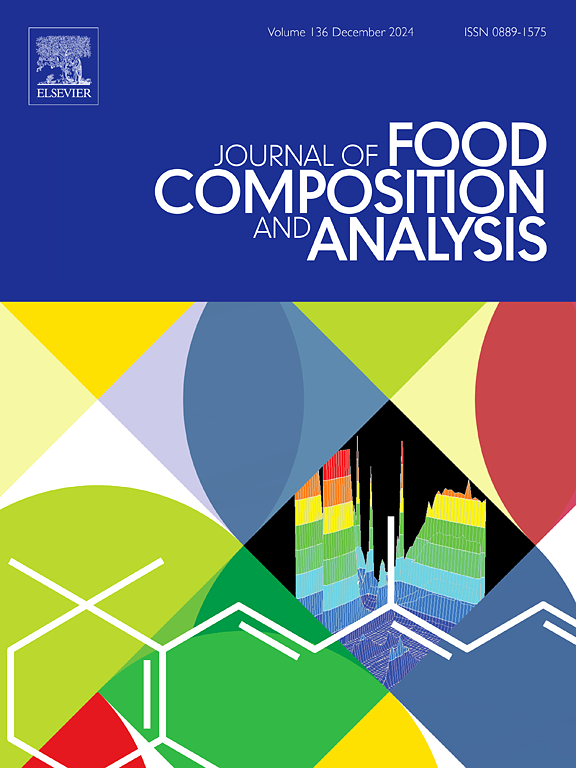Detection of chloramphenicol in aquatic products using a colorimetric aptasensor based on catalytic hairpin assembly and G-quadruplex
IF 4
2区 农林科学
Q2 CHEMISTRY, APPLIED
引用次数: 0
Abstract
The development of a novel approach for the quantification of chloramphenicol (CAP) residues in aquatic products is of paramount importance for the assurance of food safety. In this study, a colorimetric aptasensor based on the Catalytic Hairpin Assembly (CHA) and G-quadruplex was established for the rapid detection of chloramphenicol (CAP) in aquatic products. In the presence of CAP, the specific binding effect results in the dissociation of CAP-sensitive aptamer-TDNA (A-T), thereby releasing tDNA. This in turn triggers a CHA reaction, which achieves enzyme-free signal amplification. This results in the release of G-quadruplex, which causes substrate Tetramethylbenzidine (TMB) oxidation and a change in colour and absorbance values. Consequently, a rapid, sensitive and economical visual qualitative and quantitative detection of CAP is achieved. The visual limit of qualitative detection was 80 ng/mL, the quantitative limit of detection was 90 pg/mL, and the linear range was 0.0001–100 μg/mL. The sensor exhibits high specificity and good repeatability (RSD: 4.14 %), with a recovery rate of 83 % to 103.5 %. These characteristics indicate that the colorimetric aptasensor has significant potential for application in food safety detection and provides a viable new platform for the detection of CAP in aquatic products.
求助全文
约1分钟内获得全文
求助全文
来源期刊

Journal of Food Composition and Analysis
工程技术-食品科技
CiteScore
6.20
自引率
11.60%
发文量
601
审稿时长
53 days
期刊介绍:
The Journal of Food Composition and Analysis publishes manuscripts on scientific aspects of data on the chemical composition of human foods, with particular emphasis on actual data on composition of foods; analytical methods; studies on the manipulation, storage, distribution and use of food composition data; and studies on the statistics, use and distribution of such data and data systems. The Journal''s basis is nutrient composition, with increasing emphasis on bioactive non-nutrient and anti-nutrient components. Papers must provide sufficient description of the food samples, analytical methods, quality control procedures and statistical treatments of the data to permit the end users of the food composition data to evaluate the appropriateness of such data in their projects.
The Journal does not publish papers on: microbiological compounds; sensory quality; aromatics/volatiles in food and wine; essential oils; organoleptic characteristics of food; physical properties; or clinical papers and pharmacology-related papers.
 求助内容:
求助内容: 应助结果提醒方式:
应助结果提醒方式:


